jigsaw manual
Jigsaw Manual: A Comprehensive Guide
This comprehensive guide offers everything from basic techniques to insider secrets for mastering the jigsaw․ Whether you’re a beginner or an experienced DIY enthusiast, this guide will elevate your jigsaw skills․
The jigsaw, a versatile tool for both DIYers and professionals, excels at cutting various materials with precision․ It’s particularly adept at creating shapes, curves, and intricate designs that other saws struggle with․ Unlike circular saws, jigsaws shine when accuracy is paramount, making them essential for detailed projects․
Selecting the right blade is crucial for optimal performance, as it directly impacts the quality of the cut․ Mastering jigsaw techniques unlocks a world of creative possibilities, from simple woodworking to complex metal fabrication․ This section introduces you to the fundamental aspects of using a jigsaw effectively․
Understanding Jigsaw Basics
A jigsaw’s primary function is cutting shapes in diverse materials, relying on the correct blade selection․ Essential components include the motor, blade clamp, footplate, and speed control․ The footplate provides stability and guides the saw along the workpiece, while the blade clamp secures the cutting blade․
Variable speed control is crucial, allowing adjustment based on the material being cut; lower speeds are preferable for metals․ Understanding these basics is essential for safe and effective jigsaw operation, enabling users to achieve accurate and clean cuts across various projects, from simple home repairs to more complex woodworking endeavors․
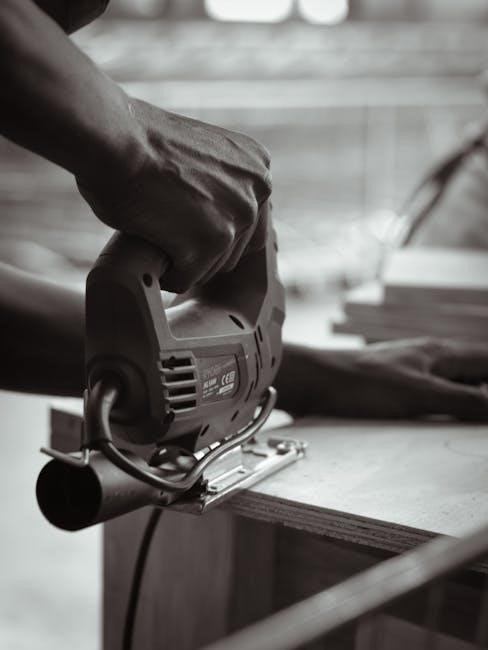
Safety First: Jigsaw Operation
Prioritizing safety is paramount when operating a jigsaw․ Secure the workpiece, use protective gear, and understand the tool’s functions to prevent accidents and ensure a safe working environment․
Essential Safety Gear
Before operating a jigsaw, equipping yourself with essential safety gear is crucial․ Safety glasses are a must to shield your eyes from flying debris generated during cutting․ Ear protection, such as earplugs or earmuffs, safeguards your hearing from the jigsaw’s noise․ A dust mask or respirator prevents inhalation of fine particles, especially when working with wood or certain metals․ Gloves provide a better grip and protect your hands from splinters or sharp edges․ Consider wearing appropriate clothing that isn’t loose or baggy, which could get caught in the blade, and steel-toed boots to protect your feet from falling objects․
Securing the Workpiece
Properly securing the workpiece is paramount for safe and accurate jigsaw operation․ Always use clamps to firmly hold the material in place on a stable surface․ This prevents movement during cutting, ensuring clean and controlled cuts․ Choose clamps appropriate for the size and shape of your workpiece; avoid over-tightening, which can damage the material․ For smaller pieces, consider using a vise or specialized clamping jigs․ Ensure the workpiece is adequately supported to prevent vibrations, which can affect cut quality․ Securing the material reduces the risk of accidents and improves the overall precision of your jigsaw cuts․
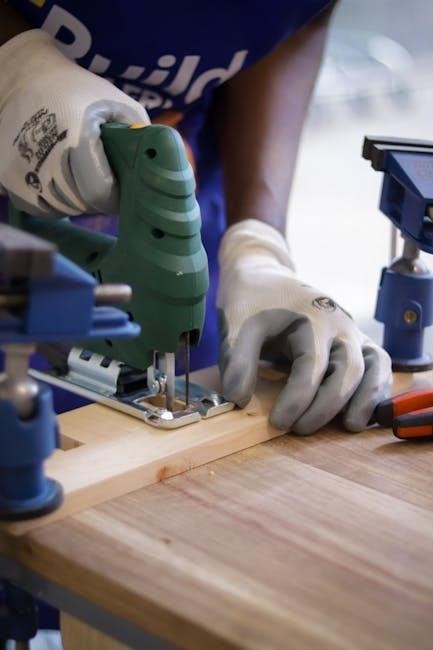
Choosing the Right Jigsaw Blade
Selecting the correct blade is crucial for optimal jigsaw performance․ The material, thickness, and desired cut all influence blade choice․ Using the right blade ensures clean, efficient, and safe cutting․
Blade Material Types
Jigsaw blades come in various materials, each suited for specific applications․ High-speed steel (HSS) blades are ideal for softer materials like wood and plastic․ Carbon steel blades offer flexibility and are cost-effective for general-purpose wood cutting․ Bi-metal blades combine HSS and carbon steel, providing durability and heat resistance for cutting harder materials such as metal․ Carbide-tipped blades are the most durable, designed for abrasive materials like tile and fiberglass․ Selecting the right blade material ensures optimal cutting performance and extends blade life․ Always consider the material you’re cutting before choosing a blade․
TPI (Teeth Per Inch) and Material Thickness
TPI, or Teeth Per Inch, is a crucial factor in jigsaw blade selection․ Lower TPI blades are designed for thicker materials, removing more material per stroke, resulting in faster cuts but potentially rougher edges․ Higher TPI blades are best for thinner materials, providing smoother, more precise cuts with less tear-out․ As a general rule, ensure at least three teeth are in contact with the material edge during cutting․ For metal cutting, use blades with more teeth; Selecting the appropriate TPI based on material thickness is essential for achieving clean, efficient cuts and prolonging blade life․ Experiment to find the optimal TPI for your specific project․
Blade Selection for Metal Cutting
When cutting metal with a jigsaw, selecting the appropriate blade is crucial for safety and precision․ Opt for high-speed steel (HSS) or bi-metal blades designed specifically for metal cutting․ Ensure the blade has a high TPI (Teeth Per Inch) to effectively cut through the metal without causing excessive vibration or damage․ The correct TPI will depend on the metal thickness․ Always confirm that at least three teeth contact the metal edge during cutting․ Use a blade with more teeth if needed․ Applying lubrication can help reduce friction and heat, extending blade life and improving cut quality․ A lower speed is also recommended․

Basic Jigsaw Techniques
Mastering basic jigsaw techniques is essential for any DIY enthusiast․ This section covers essential skills like starting a cut, guiding the jigsaw, and applying proper pressure for optimal results and safety․
Starting a Cut
To begin a cut, position the jigsaw on the edge of your material, aligning the blade with your marked line․ Gently guide the jigsaw along the markings with light pressure, ensuring the foot plate remains flat against the surface․ Avoid forcing the saw; let it naturally cut through the material․
For greater precision, especially with delicate materials, consider starting with a pilot hole․ This can help prevent splintering and provide a clean entry point for the blade․ Secure your workpiece with clamps to prevent movement during the cutting process․ This will ensure accuracy and safety while you are working․
Guiding the Jigsaw
When guiding the jigsaw, maintain a steady hand and apply consistent pressure․ Let the saw do the work, avoiding excessive force, which can lead to blade bending or breakage․ Keep your eye on the marked line and gently steer the jigsaw along the desired path․ Use your free hand to stabilize the material, ensuring it doesn’t shift during the cut․
For intricate cuts, slow down the speed and make gradual adjustments․ If the blade starts to wander, gently correct its course without stopping completely․ With practice, you’ll develop a feel for the saw and be able to guide it with precision and control․ Always make sure that you are safe when you are using the jigsaw․
Applying Proper Pressure
Applying the correct pressure is crucial for achieving clean and accurate cuts with a jigsaw․ Avoid forcing the saw, instead allow the blade to naturally cut through the material․ Too much pressure can cause the blade to bend, break, or wander off course․ Use light, consistent forward pressure while guiding the saw along the cut line․
The ideal pressure will vary depending on the material being cut․ Softer materials like wood require less pressure than harder materials like metal․ If the saw struggles to cut, increase the pressure slightly․ If the blade vibrates excessively or the motor strains, reduce the pressure․ Finding the right balance ensures smooth and controlled cuts․

Cutting Straight Lines with a Jigsaw
Achieving straight cuts with a jigsaw requires precision and the right techniques․ Utilizing guides and proper clamping methods are essential for accuracy․ This section outlines the best approaches for straight jigsaw cuts․
Using a Straight Edge Guide
For achieving perfectly straight cuts, a straight edge guide is invaluable․ Clamp a straight edge, such as a piece of lumber or a metal ruler, securely to your material․ Ensure the distance between the guide and the cut line accounts for the jigsaw’s base offset․ Run the jigsaw along the guide, maintaining consistent pressure․ This method ensures a clean, straight cut, eliminating wandering․ A T-square can help you draw a square straight line․ This technique is particularly useful when precision is paramount for woodworking and other projects, ensuring professional-looking results every time․
Clamping Techniques for Accuracy
Securing your workpiece with clamps is crucial for accurate jigsaw cuts․ Always use clamps to firmly fix the material to a stable surface, preventing movement during operation․ This minimizes vibrations and ensures the jigsaw follows the intended path precisely․ Employ multiple clamps for larger pieces or when cutting intricate shapes․ Consider using padded clamps to protect delicate surfaces from damage․ Proper clamping not only enhances accuracy but also contributes to safety by keeping your hands free and the workpiece stable․ In short, stable material equals a smooth cut․
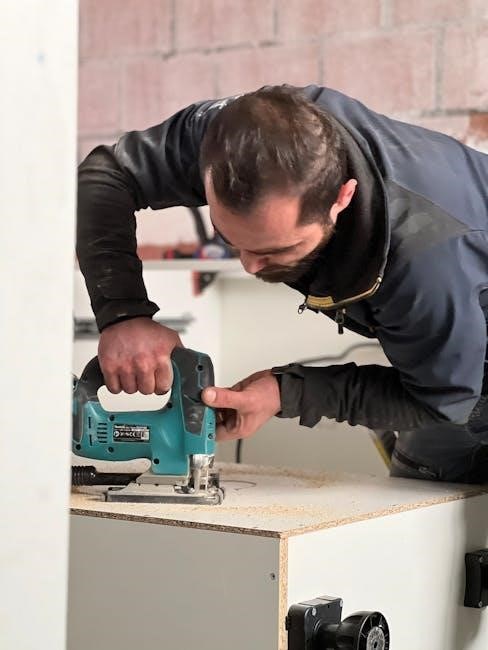
Cutting Curves and Shapes with a Jigsaw
The jigsaw excels at cutting curves and shapes in various materials․ Mastering the techniques for guiding the saw along marked lines and making precise turns is essential for achieving desired results․
Following a Marked Line
Accurately following a marked line is crucial for cutting precise curves and shapes with a jigsaw․ Start by clearly marking your desired cut line on the material’s surface, using a template or freehand drawing․ Ensure the line is easily visible throughout the cutting process․ When starting the cut, position the jigsaw blade directly on the marked line, ensuring the foot plate remains stable and flat against the workpiece․ Maintain a steady hand and focus on keeping the blade aligned with the line as you move forward․ Gently guide the jigsaw along the curve, making small adjustments as needed to stay on track․ Avoid forcing the saw or applying excessive pressure, as this can lead to deviations from the intended path․
Making Precise Turns
Achieving precise turns with a jigsaw requires a delicate balance of control and technique․ When approaching a turn, slow down the jigsaw’s speed to maintain better maneuverability and reduce the risk of blade binding․ As you reach the turning point, gently pivot the jigsaw, allowing the blade to follow the desired curve․ Avoid forcing the turn, as this can strain the blade and result in inaccurate cuts․ For tighter curves, consider using a narrow blade designed for intricate work․ If the jigsaw struggles to navigate the turn, try making relief cuts along the waste side of the curve to relieve tension in the material․ These cuts allow the blade to move more freely and create smoother, more precise turns․ Remember to practice on scrap material to refine your technique and develop a feel for the jigsaw’s responsiveness․
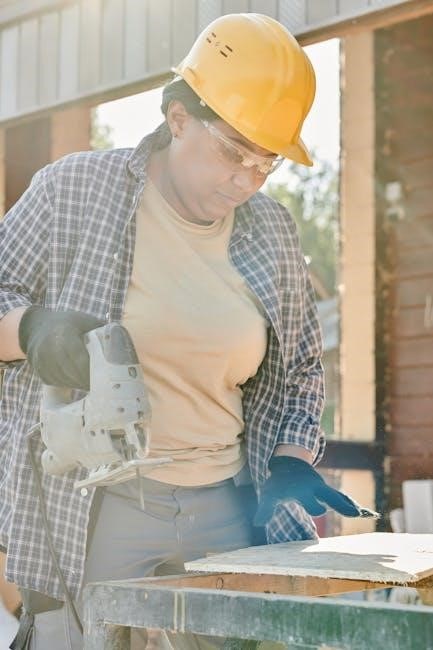
Advanced Jigsaw Techniques
Once you’ve mastered the basics, explore advanced techniques like plunge cutting and bevel cutting to expand your jigsaw’s capabilities and tackle more complex woodworking projects with greater precision․
Plunge Cutting
Plunge cutting with a jigsaw involves starting a cut in the middle of a material, without the need for a pilot hole․ To perform a plunge cut, tilt the jigsaw forward onto the front edge of the shoe, with the blade positioned above the material where you want to start cutting․ Power on the jigsaw, and slowly lower the blade into the material while keeping the shoe firmly planted․
Once the blade has fully penetrated the material, carefully begin moving the jigsaw forward along your marked line․ Maintain a steady speed and pressure to ensure a smooth and accurate cut․ This technique is useful for creating openings or cutouts in the center of a workpiece․
Bevel Cutting
Bevel cutting with a jigsaw involves cutting at an angle, creating a sloped edge on the workpiece․ To achieve this, adjust the jigsaw’s footplate to the desired bevel angle, typically using a built-in bevel adjustment mechanism․ Securely clamp the workpiece and carefully guide the jigsaw along your marked line, ensuring the footplate remains flush with the material’s surface․
Maintain a steady speed and pressure, allowing the blade to cut smoothly at the set angle․ Practice on scrap material first to get a feel for the bevel cutting process and ensure accuracy․ Bevel cuts are useful for creating decorative edges, joining pieces at an angle, or adding visual interest to your projects․
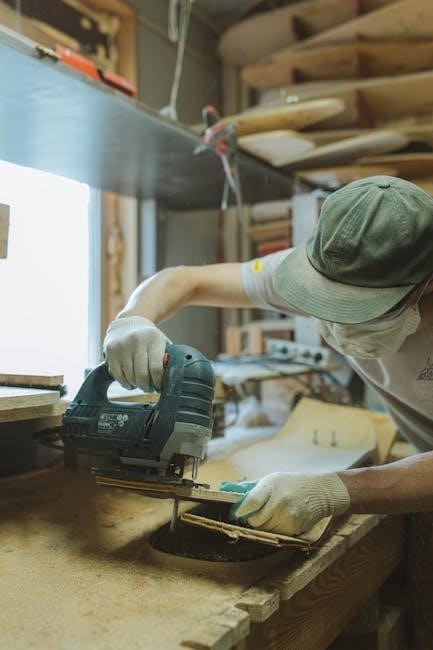
Jigsaw Speed Control
Jigsaw speed control is crucial for achieving optimal results with various materials․ Adjusting the speed allows for cleaner cuts and prevents damage to both the material and the blade․
Adjusting Speed for Different Materials
Selecting the appropriate speed setting on your jigsaw is essential for achieving clean and efficient cuts across a range of materials․ For softer materials like wood, a higher speed is generally suitable․ This allows the blade to cut quickly without causing excessive splintering․ However, when working with harder materials such as metal or tile, a slower speed is recommended․ A slower speed prevents the blade from overheating and wearing out prematurely, ensuring a smoother and more controlled cut․ Experimentation and experience will help you determine the optimal speed for each specific material․
Low Speed for Metal Cutting
When using a jigsaw to cut metal, it’s crucial to select a low speed setting to prevent blade damage and ensure a clean cut․ High speeds can generate excessive heat, which can quickly dull or even break the blade․ By using a lower speed, you allow the blade to cut through the metal more slowly and precisely․ This also helps to reduce friction and prevent the metal from overheating․ Remember to use a blade specifically designed for metal cutting and apply a lubricant to further reduce friction and improve the cut quality․ Taking your time and using the appropriate speed will result in a cleaner, safer, and more efficient metal cutting experience․

Jigsaw Maintenance and Troubleshooting
Proper jigsaw maintenance ensures longevity and optimal performance․ This section covers essential maintenance tasks, like blade changes, and provides solutions to common problems, helping you keep your jigsaw in top condition․
Blade Changes
Changing a jigsaw blade is a crucial maintenance task․ First, always unplug the jigsaw to ensure safety․ Refer to your jigsaw’s manual for specific instructions, as mechanisms vary․ Typically, you’ll find a lever or release button near the blade clamp․ Activate it to release the old blade, being cautious as it may be hot․ Insert the new blade, ensuring the teeth face the correct direction for cutting․ Securely lock the blade in place by releasing the lever or button․ Always double-check the blade is firmly secured before operating the jigsaw to prevent accidents and ensure clean cuts․
Common Problems and Solutions
Jigsaw users often encounter issues like blade wandering, which can be solved by using a straight edge guide and applying consistent pressure․ Blade breakage may occur if the wrong blade is used for the material; always select the appropriate blade type and TPI․ Another problem is splintering, which can be minimized by cutting with the good side down or using a zero-clearance insert․ If the jigsaw vibrates excessively, check if the blade is properly secured and the jigsaw’s footplate is flush against the workpiece; Overheating can be avoided by using the correct speed setting for the material and avoiding excessive force․

Jigs for Jigsaw Use
Enhance your jigsaw’s capabilities by utilizing jigs․ These specialized setups, including elevated work surfaces, improve stability and precision, leading to cleaner, more accurate cuts on every project․
Building a Jigsaw Jig
To maximize your jigsaw’s potential, consider building a custom jig․ This elevated work surface offers stability, especially crucial when working on a workbench․ The jig should be designed to be higher than the jigsaw’s blade swing, allowing for clamping and preventing interference with the bench․
A well-constructed jig facilitates cleaner and safer cuts․ Securely attaching the workpiece to the jig minimizes movement during operation․ This setup is particularly beneficial for intricate cuts or when working with smaller pieces, ensuring accuracy and control throughout the process․ Consider incorporating guides or fences into your jig design for even straighter cuts․
Elevated Work Surface
When using a jigsaw, an elevated work surface is essential for safety and precision․ This setup provides clearance for the blade to move freely beneath the workpiece, preventing damage to your workbench․ Constructing a simple jig from scrap wood can significantly improve your cutting experience․
The elevated surface allows for easy clamping of the material, securing it in place during operation․ This is especially important when cutting curves or intricate shapes, as it minimizes movement and ensures accurate cuts․ Proper elevation also enhances visibility, enabling you to follow your marked lines with greater confidence, leading to improved results․








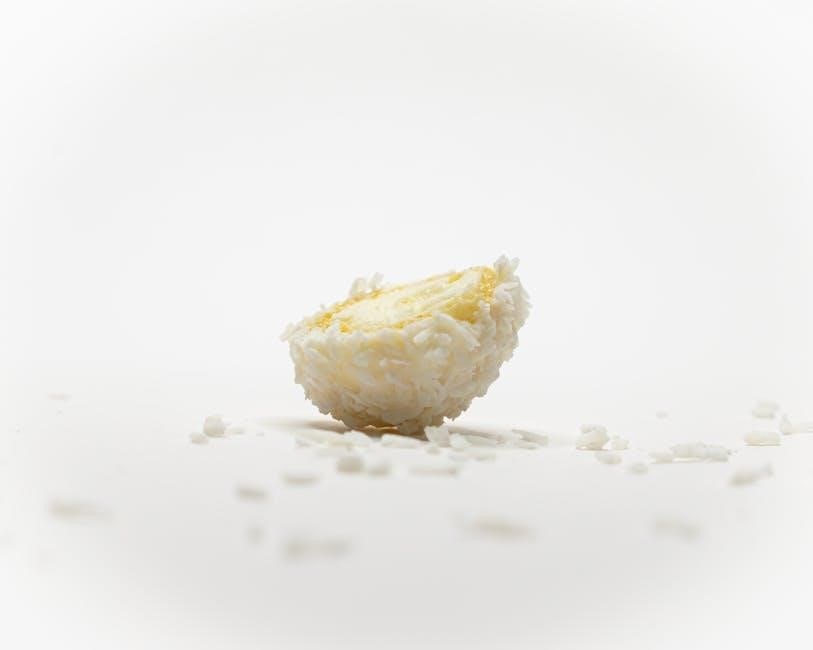


Leave a Comment